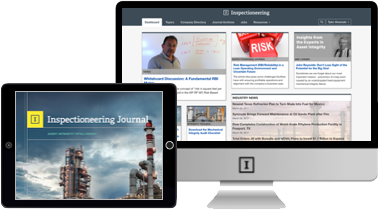Introduction
Integrity Operating Windows (IOWs) in the context of Asset Integrity Management (AIM) are those pre-set limits on process variables that need to be established and implemented in order to prevent significant corrosion or damage potentially resulting in a loss of primary containment as a result of not sufficiently controlling the process . Operation within the pre-set limits should result in predictable and reasonably low rates of degradation. Operation outside the IOW limits could result in unanticipated damage, accelerated damage, or equipment failure from one or more damage mechanisms.
This article presents a management approach for the implementation of Integrity Operating Window (IOWs) under API RP 584. I will discuss the quality management approach of PDCA (Plan DO Check Act) and present the IOW Implementation program from an Operations team’s perspective, that can be adopted for an onshore or offshore Oil & Gas (upstream) facility. This article also discusses the IOW planning process and how input from other programs like Risk Based Inspection (RBI) and Corrosion Management Plans (CMPs) is critical to establish appropriate limits.
Review Available Best Practices
To implement, sustain, and improve an effective AIM program, it is not enough to base future inspection plans solely on the prior recorded/known history of equipment condition. A fundamental understanding of the process/operating conditions and resulting damage mechanisms are required in order to establish and maintain an inspection program that yields the highest probability of detecting potential damage. Inspection plans should be dynamic and account for changing process conditions and current equipment risks and condition.
In this regard, a fundamental step is to understand the common damage mechanisms affecting the materials of construction and properly align them with the operation of the equipment, its inspection history, and measured corrosion rates under the corrosion management program.

















Comments and Discussion
Add a Comment
Please log in or register to participate in comments and discussions.